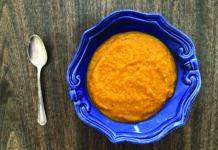The yogurt aisle presents a dizzying array of choices. Nonfat to low-fat to cream-top. Greek-style, Icelandic or Australian. Cow’s milk, goat’s milk or no dairy milk at all.
How to pick?
“Your best bet is to choose yogurt in its most simple, plain form,” advises Alicia Romano, a clinical dietitian at the Frances Stern Nutrition Center at Tufts Medical Center. “Start with plain yogurt and then control what you add.”
While fat content has traditionally been the focus of yogurt labeling and advertising, Romano says what consumers should really be paying attention to is added sugar.
Yogurt naturally contains between 6 and 12 grams of sugar in a six-ounce serving (the size of most yogurt containers these days). So anything too far above that is something to be cautious about. “Some yogurts have up to 33 grams of sugar. That’s just crazy,” Romano says.
But what about the fat? “In general, low-fat would be a fine choice for most consumers. A lot of fat-free products tend to add more sugar to get some flavor,” Romano says.
Yogurts marketed specifically to children or toddlers can also be high in added sugar, she notes, so read labels carefully. The same goes for nondairy yogurts, often made from soy, coconut or almond milks. They are likely to be highly processed and may have more added sweeteners and stabilizers to mimic the taste and consistency of dairy yogurt.
And watch for marketing that distracts from nutritional content, she says. For example, organic yogurts are just as likely as conventional ones to be high in added sugar, so while they may be good for the planet, they may not be great for you.



















